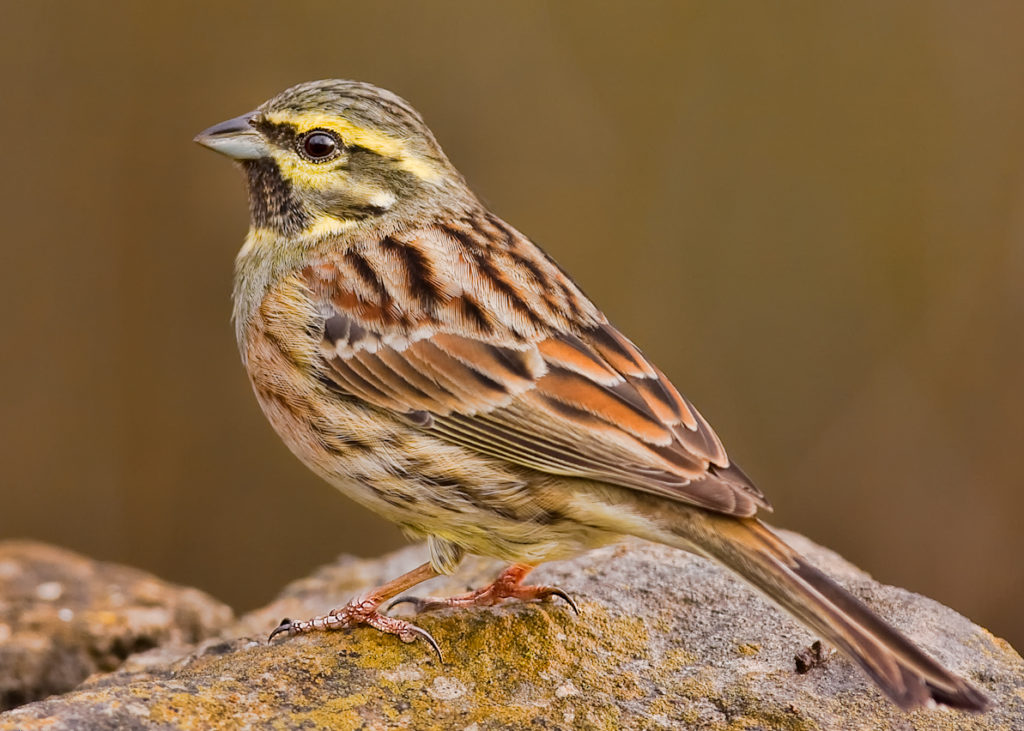The cirl bunting Emberiza cirlus (pronounced sirl) is a small sparrow sized farmland bird, which almost became extinct in the UK in the late 1980s and is now confined to south-west England. This was probably due to changes in farming practices, particularly the switch to autumn sowing of cereals and the widespread use of broad-spectrum herbicides. In Devon, small traditionally-managed coastal farms have persisted, the exposed coastal environment making spring crops a more viable option than winter cropping. This has made this area more appealing to cirl buntings according to the RSPB.
Work by conservationists and farmers has reversed the population decline. A survey last year showed the population had passed 1,000 breeding pairs, a dramatic increase from just 118 pairs in 1989 according to Teignbridge Council. Teignbridge has 33% of the national population and our parish is a stronghold for the species. The male has brown upperparts and a distinctive black and yellow facial mask. Females are duller in comparison and lack the black mask. They may be spotted on walks along country lanes, such as towards the brewery or near to Bishops Palace. They are often seen in fields and hedges or sat on top of trees or telegraph poles. Bear in mind they’ve been given special protection by the Wildlife and Countryside Act, which makes it an offence to disturb them at or near the nest.
The RSPB has recently bought 40 hectares of land at Ashill, between Teignmouth and Bishopsteignton, as part of their long term work to secure the future of cirl buntings. The purchase has been funded by building developers in Teignbridge as compensation for the impact of forthcoming development on cirl buntings. The RSPB will manage the new site as low intensity mixed farmland that will include cattle grazing and approximately 1,500 m of hedgerow restoration using traditional methods. The charity will also be growing a spring barley and wildlife mix to provide winter food for the birds in the colder months.

